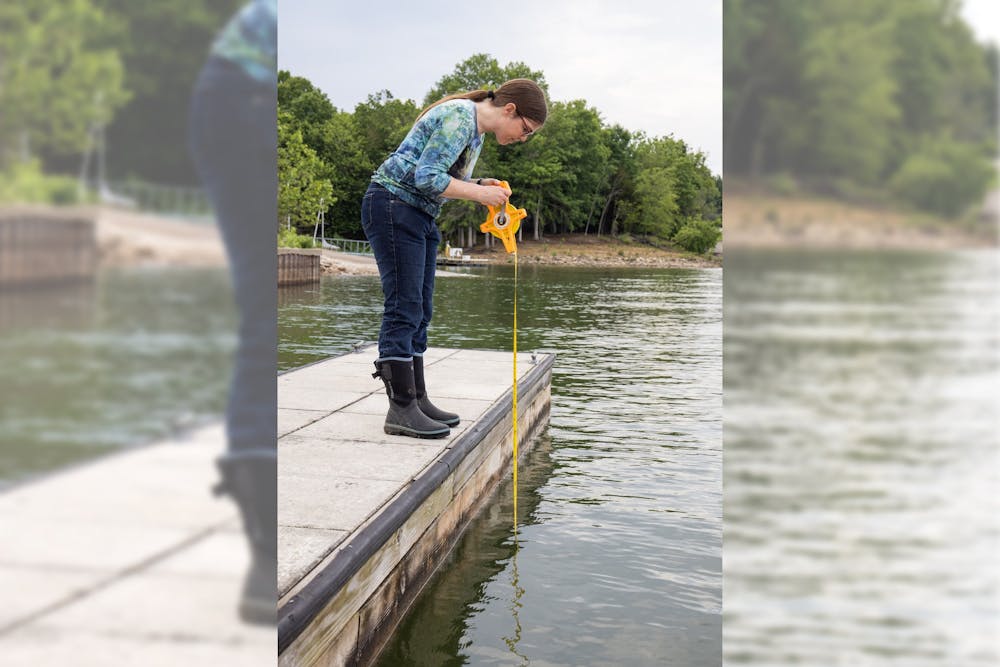Nearly 25,000 miles of Indiana rivers and streams are too polluted to be safe for swimming or fishing, according to a report released by the Environmental Integrity Project on March 17. In the report, Indiana ranked first for the most miles of impaired waterways and 11th for the highest percentage of impaired waters assessed.
Impairment is a classification for water that is too polluted to meet standards for typical use, like swimming, drinking or fish consumption. The report assessed a number of waterways across the nation to rank states based on the percentage of impaired waterways and the total amount of miles of impairment.
According to the report, a major contributor to water pollution is manure and fertilizer runoff from farms. This causes the concentration of E. coli and nutrients that promote bacterial growth in waterways.
Watershed Coordinator Maggie Sullivan, who works at the nonprofit Friends of Lake Monroe, said Lake Monroe suffers from nutrient contamination. Lake Monroe also has streams that feed into the lake which have elevated levels of E. coli, but levels in the lake are well below state standards.
“Our biggest concern right now is harmful algal blooms,” Sullivan said.
Last fall, many Bloomington residents complained of an unpleasant taste in the water. The taste was due to an algal bloom in Lake Monroe, which was partly due to fertilizer runoff.
“(Lake Erie) has had algal blooms that produce toxins,” Sullivan said. “We want to avoid those sorts of situations.”
Because Lake Monroe water is currently safe, Friends of Lake Monroe focus on prevention strategies to combat future pollution. The lake provides water to over 130,000 houses, as well as to IU, Sullivan said.
The nonprofit will present a summary of their Lake Monroe water quality report at a public forum in Bloomington on May 24.
Landon Yoder, IU O’Neill School of Public and Environmental Affairs professor who leads a project about nutrient management on farms, said cover crops are especially important.
Cover crops are planted in offseasons as a way to maintain soil structure and prevent erosion that can lead to runoff, Yoder said. However, not all farmers use this method.
“It’s an additional cost, and there’s a little bit of a learning curve,” Yoder said.
Although Yoder said he believes Indiana water needs to be cleaner, he was optimistic about the work being done.
“It doesn’t mean, necessarily, that our waters are the worst in the country,” Yoder said. “What it does mean is that we’re at least doing a better job of monitoring than some other places.”
Another method to prevent water pollution is precision farming, which uses technology to create fertilizer prescriptions. These prescriptions apply fertilizer to crops according to fertility levels, while also taking into account the movement of water across the field to limit runoff.
Chad Dow, who works on his fifth generation family farm in nearby Morgan County, is an advocate for sustainable farming methods.
“Let’s prescribe enough product to maximize the potential of a crop without overdoing it,” Dow said about his work with precision farming methods.
In 2021, Dow’s farm was awarded the River-Friendly Farmer Award, which is presented to several farmers across the state for doing an “outstanding job of protecting their rivers, lakes and streams,” according to the award’s website.
Dow believes technological advances have helped farmers be more efficient while simultaneously protecting the environment.
“We do this for a living,” Dow said. “If we don’t take care of what we have, then we're not gonna have it for future generations.”
CLARIFICATION: A previous version of this article lacked clarity about the presence of E. coli in Lake Monroe.






